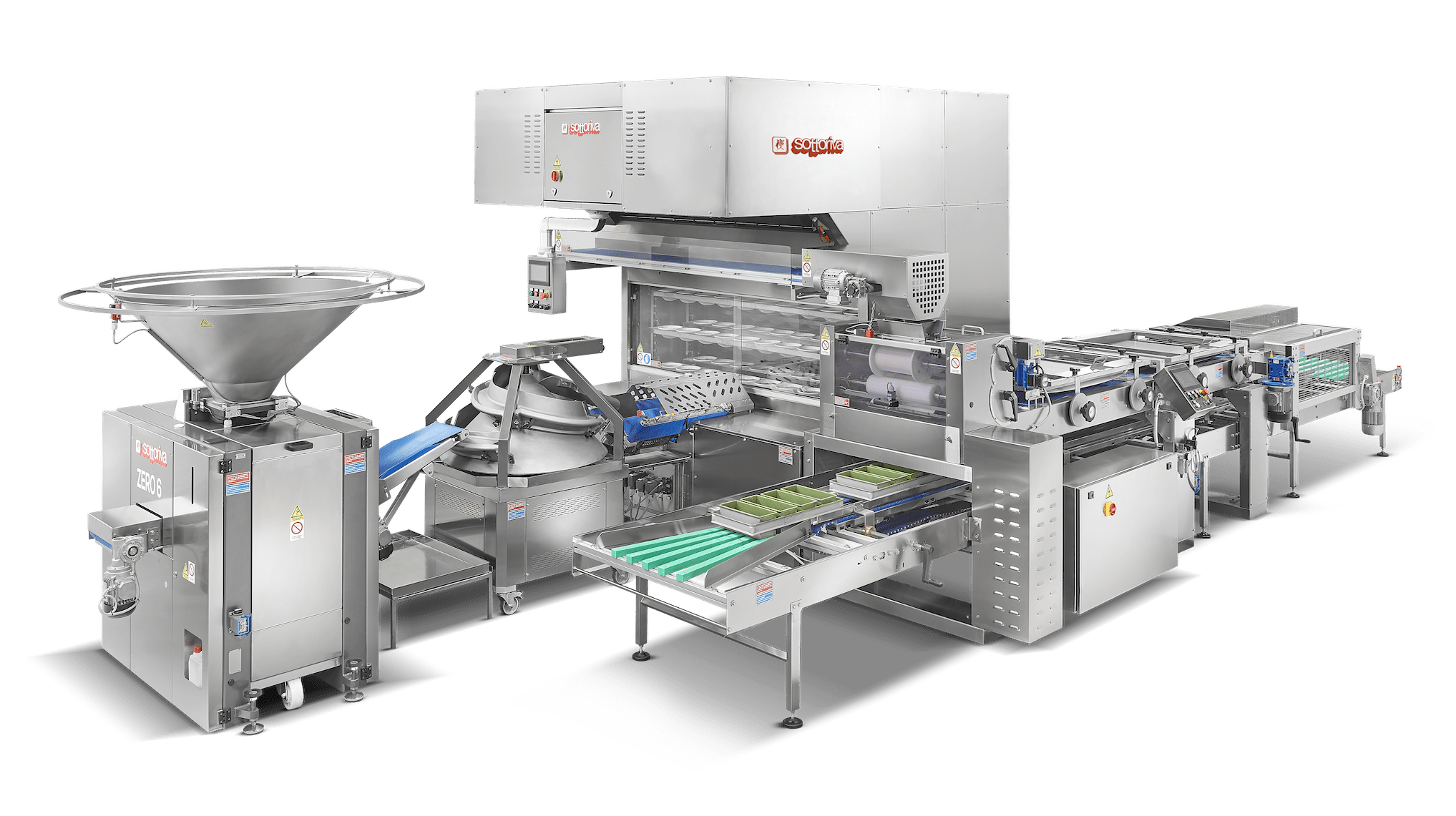The presence of merger systems in the packaging lines is a significant sign of a very high level of complexity and automation. The selection of the correct device is not trivial and has a strong impact on the quality of the products and the proper functioning of the downstream machines and in general on the efficiency of the line.
There are many types of mergers, but the main ones fall into two categories: pneumatic or accumulation unifiers and dynamic unifiers. Accumulation types have “gates” on the entrance lanes which remain closed waiting for the convergence section to be free, then releasing the rows of products in sequence.

This simple and cost-effective solution have two important prerequisites: the products must be able to withstand the pressure during the accumulation phase and the downstream machines must be able to receive the products in trains without being stressed.
The first point is intuitive because it concerns the integrity of the products and it means that those eligible are boxes, trays, stacked products in tight wraps. It is more important to deepen the second point though.
At the exit of the merger, the products are attached to each other or in any case very close, but the speed of the belt is equal to that which would be obtained with regularly timed products with a gap between them equal to the size of the product itself. The average productivity of the line does not change, but when the train arrives downstream, the instantaneous one, from the point of view of the machine, is double.
For this reason, either the machine is able to handle the situation, or it is necessary to normalize the flow with a slow – down belt and an acceleration one after the unifier, which clearly requires more footprint, two extra motors and a more complex control logic.
When these premises are not verified and the products cannot be accumulated, due to the risk of overlapping (typically flowpacks or pillow bags) or damage due to excessive pressure or because the downstream machines require the products to be presented at a regular frequency with adequate distance between one product and another, then it is necessary to use a dynamic system.
A dynamic merger is a scalable system composed of a series of phasing belts that speed up or slow down the products arriving from the incoming rows in order to create the necessary gap to prevent two pieces from appearing at the convergence point at the same time.
In these devices products are dealt with always one by one thus avoiding to have group of products while ensuring a regular spacing. As the production rate increases, the number of phases required also increases.
The fastest machine developed by MH is the HP dynamic systems that can reach throughputs up to 600 ppm for 150 mm long flowpacks. Depending on products’ weight and packaging up to 5 phasing conveyors with brushless drive and vacuum suction can be used to handle the steep accelerations.





